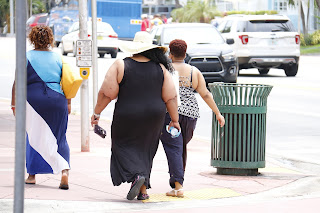THE MIGHTY POWER OF A CALL TO ACTION- THIS WILL MAKE YOU A BETTER MARKETER
Which one did you click? Were you enticed
by the idea of increasing your conversions? Did the yellow button grab your
attention? Or were you determined to become an expert? Did you realize that
those buttons are live examples of a call to action?
A call to action (also known as a CTA) is exactly as it
sounds: a call for your visitor to take an action. Its a button included on a
website, usually accompanied with copy, prompting the visitor to perform a
specific and immediate task.
Now, let’s make one thing clear: effective calls
to action are essential and should not be underestimated. If you
take the time and necessary steps to build this area of your marketing
strategy, you will notice an increase in your desired results.
Notice we say, “your desired results”. That’s because calls
to action are not used solely to persuade visitors to purchase something, as
you are probably most familiar with. If you have ever clicked anything on the
internet, it was most likely a call to action. Whether it was “Go” in your
Google search this morning, or “Pay Now” when you made your last purchase,
calls to action are truly everywhere. Calls to action can be used to
- Generate leads with a sign-up form
- Have people download a PDF
- Gain newsletter subscribers
- Get your products shared on social media
- Add items to a shopping cart
- Read more articles
- The list goes on and on!
The biggest problem? People don’t like being told what to
do. The challenge? You must come up with a creative and unique way of guiding your
visitors where you want them to go. Sure, calls to action are everywhere. But
what sets the effective apart from the ineffective, is the strategy behind
them. That’s where your canny marketing abilities come into play.
Consider the following tips your work out plan! Exercise
these daily to build the muscle on your CTA’s. Soon enough, you will have
forged powerful, robust, and effective calls to action that yield nothing but
conversions.
The first thing to note here is that its best to have more
than one call to action. The more CTAs you have throughout the page, the more
likely the visitor is to convert. Ensure that your calls to actions are
strategically placed to gain maximum attention and exposure. Your first CTA
should be high on the page and easily spotted. Below, we will cover more
details on how it should look, but let’s focus on placement.
After the first one, feel free to use multiple CTAs throughout
the page, even if they encourage a different action. Look at this example from
Gap.com. The initial call to action is towards the top, prompting people to
shop around. As you scroll down, the CTAs narrow to specific actions such as
“Shop Shorts”, “Shop Jeans”, “Learn More” and others.
Much like effective placement, the look of the button is
pertinent to grabbing the viewer’s attention. You can draw even more attention
to your CTA by:
Using negative or white
space
Dangling a flashy button amid a white sea is sure to catch
eyeballs.
Using a contrasting color
If you don’t want to use white space around your button,
that’s okay! Changing the color of the button to sharply contrast it’s
background will also scream for attention!
Sizing it appropriately
Size matters! If your call to action is the same size as the
font around it, it can easily fly under the radar as visitors quickly skim your
page. Here is an example of CTAs that would probably be more effective if they
were larger.
Reducing the Clutter
Take a look at the following two images. The first image has
a lot going on. It is very cluttered and the viewer has a hard time figuring
out what to do on the page.
Then here is Spotify’s clean, cluster-free page with two
clear and obvious CTAs.
If you have too much going on around the CTA, your viewers
could skim right over it as if it were too small. Reduce the clutter around
your button to ensure it is the center of attention.
Now that you have shined the spotlight on your button and
gotten the viewer’s attention, its time tell them what do and why. Customers
aren’t going to do something that they don’t have a need for, so help them
recognize how your offer fills their needs. Focus on the value that the viewer
will receive by acting on this call.
Its okay to add text around the button that further explains
the value, as long as it doesn’t look too cluttered.
Have you ever heard the saying “say what you mean and mean
what you say”? Well that could not be more relevant. The language you use
should be absolutely clear when telling people what they get.
If your visitor is reading about a free e-book you are
offering, your CTA button should make it clear that they are going to “Download
the E-book for Free”. If you are selling backpacks, your buttons should make it
known that if customers click through, they will be able to purchase your
backpacks.
Using plain terms like “next” are not effective and should
be avoided. What happens “next”? Visitors should never question where they will
be taken if they click.
Keep in mind that this should feel voluntary for
your viewer. This should be crafted so that your viewer feels like they want to
make this choice, not like they are being forced. So, don’t overdo it. Don’t
bombard them with “BUY THIS” and “BUY NOW”. Also, ease them into persuasion. If
someone is looking to purchase a car, you don’t want to scare them and jump all
the way to “Proceed to Checkout” when you could ease them into a decision with
“Schedule a test drive”. This helps the viewer feel like they call the shots
which ultimately makes for a better user experience.
You can practice optimizing your conversions by split testing! Split testing, also known as
A/B testing, is a practice of running two live examples of something at the
same time to see which one performs the best. Then, you apply the winner of the
test to your page full time.
To Optimize Placement
Use heat maps programs like Crazy Egg, Lucky Orange,
and Mouseflow to
see which places convert best. Try split testing the same button but in
different places on your page to see which one gets clicked or “converts” the
most. Refer to your heat map to find these “hot spots”. It could be
effective to move your CTA to the spot that performs the best or is “hottest”.
To Optimize the Look
You can experiment with different colors or shapes! There
have been thousands of studies behind how colors affect different demographics
such as women and men. There is strong support that different colors can
psychologically influence the buyer’s decision making process. This article explains the psychology of
color and even provides great live examples. One company noticed a 21% increase
in conversion just by changing their CTA button from green to red! Wow!
ClickBank optimizes too!
Even the ClickBank Product and Development Team have split
tested to optimize ClickBank’s Order Form. Between a green, red, and yellow
“Pay Now” button, ClickBank found that red was the winner. If you check out our
order form today, you will find a red Pay Now button at the bottom of the form.
To Optimize the Language
To optimize what your buttons and surrounding text say, keep
split testing! Here are more case studies of companies that have
seen increased conversions simply by changing the verbiage of their buttons and
surrounding text.
Keep in mind that there are thousands of different variables
that can affect these test results so its important to test your own options to
see what works best with your audience.
Conclusion
I just got you to read my blog post without telling you
to do it! I caught your attention with inviting colors, I immediately presented
you with the value you’d receive for reading this article, and I followed
through with that promised value. Would you consider that effective? Well,
seeing as you’re all the way down here, still reading, you must have
gotten something you liked!
A call to action provides both direction for your users as
well as a way to measure the success of your site. Not only will you find an
increase in interaction, but you can use CTA’s to create a clear and easy path
through your website, ensuring a satisfying user experience. This ultimately
builds trust with your audience and brings them back time and time again.
By testing, testing, and testing some more, you can find out
what strategies work best with youraudience to optimize and
increase your conversions.




Comments
Post a Comment